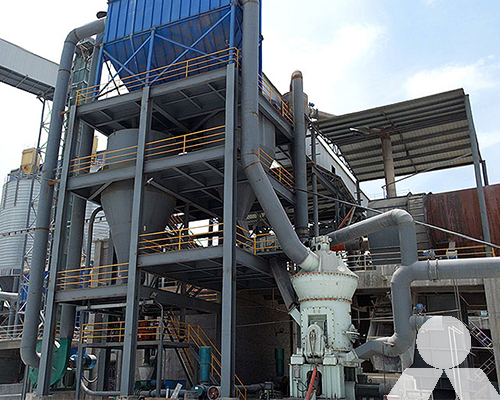High production rate of vertical cement mill in Sri Lanka
In the realm of cement manufacturing, enhancing productivity is the ultimate goal. Vertical cement mills have emerged as a crucial asset in cement production, offering numerous advantages including increased productivity, reduced energy consumption, and a smaller environmental footprint. In this article, we will delve into the strategies that can be employed to boost productivity with vertical cement grinding mills.

Advanced Technological Integration:
To realize high productivity in vertical cement mills, the integration of advanced technologies is pivotal. Contemporary mills are equipped with cutting-edge automation systems, real-time monitoring tools, and predictive maintenance solutions. These technologies grant greater control over the grinding process, leading to heightened efficiency and minimized downtime.
Optimization of Operational Parameters:
Maximizing productivity hinges on the precise operation of vertical cement mills within their optimal parameters. This entails meticulous adjustments of variables such as mill speed, feed rate, and grinding pressure. By fine-tuning these parameters, operators can ensure the mill operates at peak performance, yielding more cement with reduced energy consumption.
Leveraging Grinding Aids:
The use of grinding aids can significantly augment the productivity of vertical cement mills. These chemical additives enhance grinding efficiency by mitigating agglomeration and improving the flowability of cement particles. Grinding aids also contribute to achieving finer particle sizes, thereby bolstering cement strength.
Regular Maintenance:
Sustaining long-term productivity in vertical cement mills hinges on meticulous maintenance. Scheduled inspections, lubrication, and timely wear part replacements are crucial. Preventive maintenance helps stave off unexpected breakdowns and costly downtime, ensuring uninterrupted production.
Embracing Energy Efficiency:
Energy consumption represents a major concern in cement manufacturing. Vertical mills inherently offer superior energy efficiency compared to conventional horizontal ball mills. To further enhance energy efficiency, mills can be outfitted with advanced classification systems and high-efficiency separators. Additionally, waste heat recovery systems can capture and recycle thermal energy, reducing overall energy consumption.
Fostering Expertise through Training:
Well-trained operators and maintenance personnel are indispensable for achieving and sustaining high productivity levels. Training programs should encompass equipment operation, maintenance protocols, and safety practices. Knowledgeable and skilled staff can swiftly address issues and optimize mill performance.
Emphasis on Environmental Responsibility:
The cement industry is increasingly prioritizing sustainability. Vertical mills contribute to a reduced environmental footprint due to their lower energy consumption and diminished emissions. Adhering to eco-friendly practices, such as utilizing alternative fuels and fine-tuning the grinding process, can further elevate productivity while minimizing environmental impact.
Vertical cement grinding mills stand as a promising solution for elevating productivity in cement manufacturing. By harnessing advanced technologies, optimizing operational parameters, employing grinding aids, adhering to regular maintenance, embracing energy efficiency, fostering expertise through training, and championing environmental responsibility, cement producers can achieve heightened production rates, reduced energy consumption, and a more sustainable industry. With unwavering commitment to efficiency and innovation, vertical cement mills are poised to play a pivotal role in the future of cement production.









